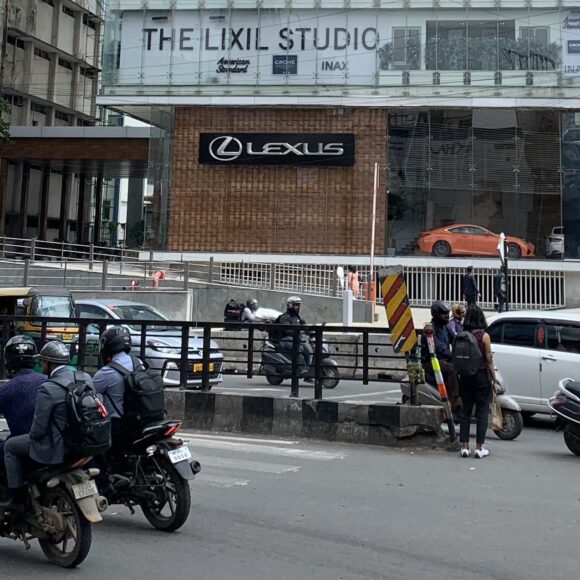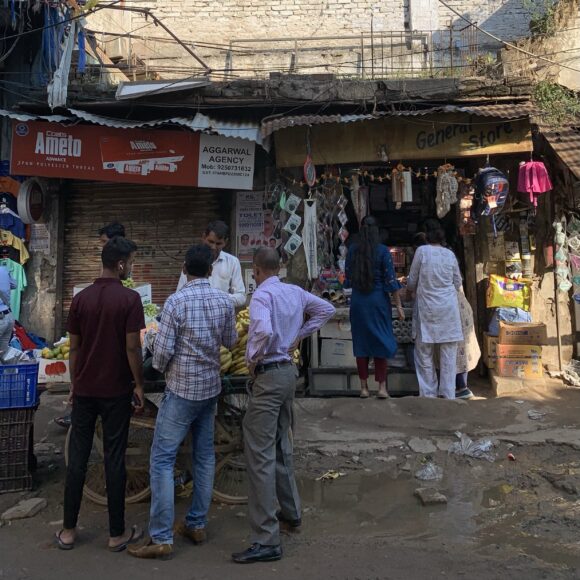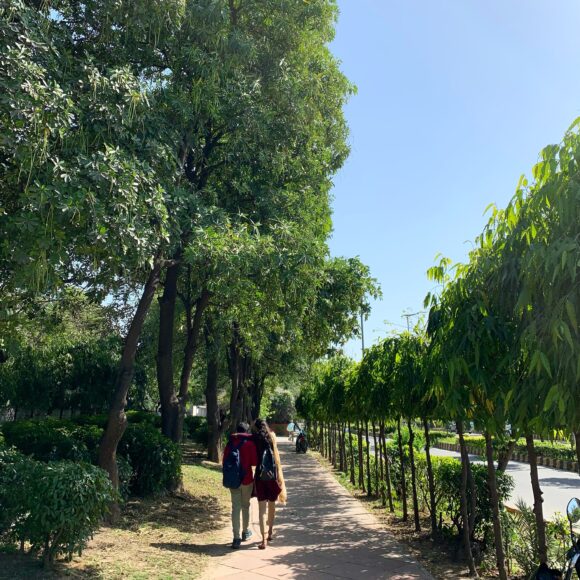
Indian metros remind me of 1840s Paris. That may seem like a strange statement, but I’ll explain what I mean.
Back in the 1840s, when the Industrial Revolution was barely getting underway, Paris was already a bustling and successful city that attracted people from far and wide. It was one of the world’s major centers of learning, culture and business. But when you arrived in the city all you saw at first was streets filled with rot and pestilence in a frightening chaos of frenzied movement. Visitors, for example Nikolai Gogol coming from Saint Petersburg, were shocked by what they saw. It is only when you got invited into the private spaces where the elite actually spent their time, the grand residences, the churches and chapels, the commercial spaces like the Palais Royal, and emergent spaces for living like the new restaurants and cafés that were coming up, that you got a completely different experience. All Paris’s splendors were hidden away.

Indian metros are the same. A visitor arriving would first see a disorganized mess, with a blatant disregard for public space. In most places it is nearly impossible to even walk from one place to the other. You weave your way in and out of traffic, pick your way over pieces of concrete, through piles of refuse and around puddles. It gives the impression public space receives little investment, but also no love and care from the community. It is simply a remnant, what is left over once we have taken care of the needs of traffic and of utilities like sewage and electricity.

Our investment, in other words our pride and our dreams, are focused on the private spaces, which reach heights of splendor and elegance. Once we’ve made our way out of the chaos and disrepair of the public space, we enter magnificent clean, well-designed, peaceful oases that are homes, offices, restaurants, shops and malls, apartment complexes etc. You could exclaim, just as a visitor to 1840s Paris did, “All your wealth is in your interiors!” It seems natural to us because it’s just the way it is. But is this really the way we want it to be?
In nineteenth-century Paris, what came next was a massive campaign to rebuild and beautify the city, focusing on its public spaces. Many people are surprised that Paris wasn’t always the way it is, but it wasn’t. It used to be just like today’s Indian cities. What it became was the result of an intentional effort, a huge effort, in fact: in the 1850s and 1860s, Napoleon III and his Prefect for Paris, George-Eugene Haussmann, led the world’s largest ever peace-time rebuilding of a city to make it orderly and beautiful, worthy of the capital of the imperial dynasty Napoleon III foresaw. A well-staffed and prestigious department of the City administration was created specifically to look after public spaces. The campaign lasted for several decades beyond the fall of the Second Empire in 1870. Paris has been trading on that beauty for close to 200 years now, it is one of the city’s greatest and most reassured assets.

I’m tempted to say that India needs something of the same, an urban revolution of its organization and public space. It’s not enough just to have fragments of beauty in a sea of sloth.
In some ways this is already underway. For example in the massive drive to build infrastructure, notably for public transportation; in some urban projects in different Indian cities; and in the greatly improved cleanliness of public spaces overall. But in other ways Indian cities are completely missing the boat.
The core of the issue is the public/private balance, which comes down to the issues of the commons, that is to say what we share for collective benefit as a society vs what we benefit from individually. Our urban public space is at the heart of that question, and is emblematic of how a society values the collective asset that is urban space.
Indian cities need to deeply reevaluate how they approach public space. For that, the first step is the full awareness of the qualities and of the inadequacy of what exists.
There are lots of great things in Indian urban public space. It has an extraordinary energy thanks to the very Indian ingenuity with which people invest space with a multitude of uses. There are many beautiful urban parks that communities deeply treasure.

But overall, Indians should be deeply dissatisfied. Public space is the province of the car, it is treated as the utilitarian dominion of the upper classes who need to cross it to get from one nice private place to another. There is not a moment’s thought given to the quality of experience of those who need to, or should choose to, spend time in these spaces as such. What we have is not the vision of the society that Indians want to be building. We need to take a political stance that making good spaces private and exclusive and having only difficult-to-use, neglected and underinvested spaces broadly accessible to the population is not the desired societal model.
Bridging that gap will be an enormous challenge of both resources and intelligence. As a country, India is meeting huge challenges, and this one is certainly within its ability to address. The key is to have the will and the common vision. If so, India will have cities that are inclusive, functional and perhaps most importantly beautiful, that Indians can truly be proud of for generations to come.